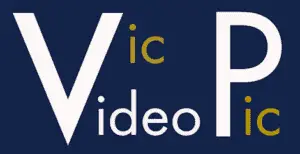Recently, DJI has focused mainly on lightweight models. This is understandable because it is the best-selling segment of the prosumer drone market due to affordability, portability, and more relaxed regulations
I have recently compared the DJI Flip to the Mini 4 Pro for video and photos. Another lightweight DJI model is the affordable Mini 3, selling at a price similar to the Flip. In this article, I will compare them for video quality and functionalities
Other related articles you may find interesting:
Video Specs and Functionalities
The Mini 3 was released in December 2022, six months after the Mini 3 Pro, as a more affordable option. Several important features of the Pro model are missing to justify the lower price tag
| Flip | Mini 3 | |
| Sensor size | 1/1.3″ | 1/1.3″ |
| Field of view | 24 mm | 24 mm |
| Aperture | f 1.7 | f 1.7 |
| Max bitrate | 150 Mbps | 100 Mbps |
The Flip and the Mini 3 have the same sensor size, 1/1.3”, with a field of view of 24 mm and a wide aperture of f1.7
However, the Mini 3 has a lower max bitrate, 100 Mbps, compared to 150 Mbps for the Flip. A lower bitrate means more file compression, but the value is relatively high and should not translate into a major difference in footage quality
The Flip has a frame rate of up to 100 fps at 4 K for super slow motion, while the Mini 3 is limited to 30 fps. This means that with the cheaper model it is not possible to apply real slow motion. It is certainly a limitation, as slowing down the footage is an excellent way to add interest, especially when filming close to a moving subject
The Mini 3 doesn’t have obstacle detection sensors, a crucial safety feature. Only a pair of downward-looking ground proximity sensors is present for landing. The Flip has a forward infrared sensor to detect obstacles in front of the aircraft and a downward one for landing
A major shortcoming of the Mini 3 compared to the Flip is the lack of the three powerful intelligent flight modes:
- Active Track
- Spotlight
- Point of Interest
For many users, this can be a deciding purchasing factor, as tracking is a very popular feature. Spotlight and Point of Interest are valuable for performing smooth cinematic moves while maintaining the target in the same position in the frame
The Mini 3 cannot perform Master Shots and Hyperlapses, while the Flip is equipped with all the intelligent features of the flagship Mini 4 Pro, except for Waypoint mode
In terms of intelligent features, it is a huge win for the Flip
Design
The Flip is a versatile drone with an unusual shape. The propellers are protected by bulky fixed guards, making it safer indoors or in confined spaces with obstacles at a low altitude. They also protect people in case of collisions
The flip side (forgiving the pun) is that it is less aerodynamic than traditional models like the Mini 3. The announced wind resistance is the same, but the Mini 3 performs slightly better in frontal medium to strong winds at a high altitude
Unlike the Mini 3, the camera of the Flip cannot rotate to vertical orientation. Footage in portrait mode can be obtained by selecting the vertical 2.7k resolution. There is a loss of resolution, but the results are acceptable for social media use
The announced battery life in the Flip is quite good at 31 minutes, against the 38 minutes of the Mini 3, an excellent performance
The video transmission of the Mini 3 is based on the outdated OcuSynch 2 versus O4 for the Flip
The transmission of the signal varies a lot according to the geographic location. Here in Europe, I got disappointing results with the Mini 3, while the Flip performed extremely well. I often test signal strength on this hill with strong interference due to communication aerials and obstacles between the controller and the aircraft. I never managed to get this far with any other prosumer drone
Image Quality
Since the two models share the same sensor, we might expect similar footage quality. But the camera is only a part of the equation
The Flip has the same image processor introduced with the Mini 4 Pro, to replace the one of the Mini 3 and 3 Pro. The differences in detail and color rendition between the Mini 4 Pro and the Mini 3 are evident. DJI constantly tweaks the processing algorithm, and I noticed slight differences in footage quality between the Flip and the Mini 4 Pro
Here you can see some footage taken with the two models in similar light conditions. I detect more detail, richer colors and better structure of the sky with the Flip
By turning down the camera for bird’s eye views, we notice even more the difference in detail. Some users find that the Flip footage is even too sharp. In the camera tab of the Settings, it is possible to fine-tune the Sharpness value
The Flip was released well over two years after the Mini 3, plenty of time to adapt the image processor and the algorithm to the new camera. The quality of low-light footage with the Flip is simply astonishing. The Mini 3 cannot compete
The Flip has a second color profile not available with the Mini 3, D Log M. It is a 10-bit flat profile capable of displaying over 1 billion colors. It responds better to color grading for adapting a clip to the color scheme of specific projects
DJI supplies a specific LUT for the Flip, you will find a link in the description of this video. The presence of this color profile is another major deciding factor in favor of the Flip for users who rely on computer post-processing
